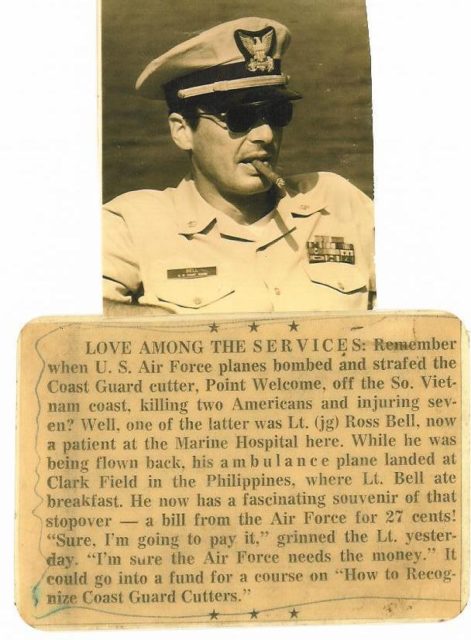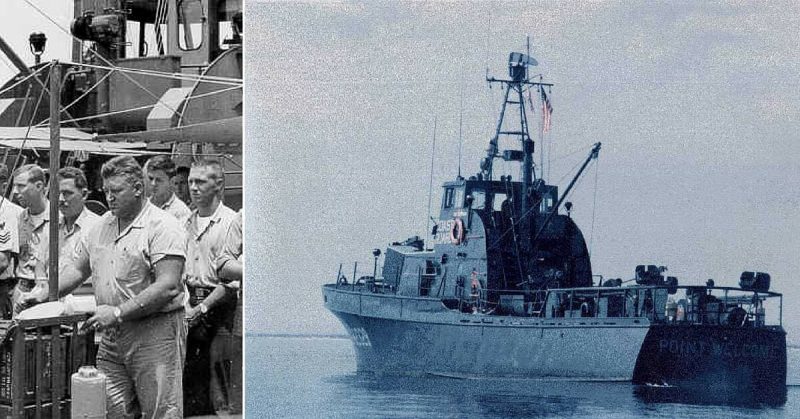War is always full of tragedies, but friendly fire incidents are often the worst. In 1966, while off the coast of Vietnam, a United States Coast Guard Cutter learned this lesson firsthand. But in the face of this tragedy, came bravery and exceptional devotion to shipmates.
The 82-foot Coast Guard Cutter Point Welcome had been patrolling by the 17th parallel, near the demilitarized zone between North and South Vietnam. As part of Operation Market Time its duty was to prevent any smuggling activity; to stem the flow of weapons to Viet Cong cells operating in South Vietnam. At 0330 on the 11th of August, 1966 the crew was experiencing a night like any other.
They were drifting lazily off the coast, scanning the water, and looking for the telltale signs of waterborne smugglers. Around that time three planes from the United States Air Force were attacking North Vietnamese boats north of the Point Welcome. The Officer of the Deck (OOD), Lieutenant Junior Grade (LTJG) Ross Bell, and Junior OOD Gunner’s Mate 3rd Class Mark Mckenney were watching as the planes illuminated targets off the shore.
Around that time they began steaming south at five knots. Their ship’s wake must have caught the attention of the Air Force pilots because just after that they were illuminated.
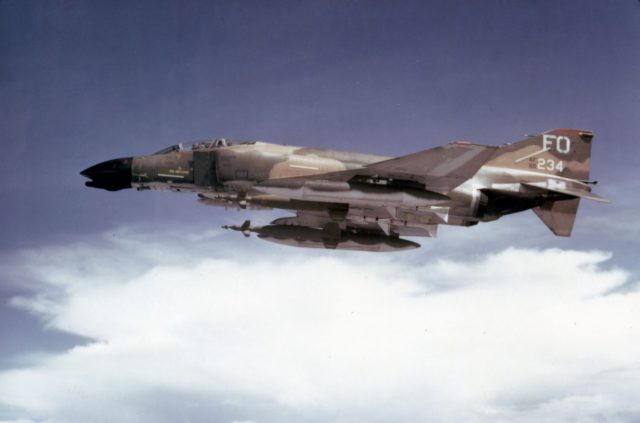
(Wikipedia)
At 0340 One of the F-4 Phantoms unleashed a hailstorm of 20mm rounds onto the fantail of the Point Welcome. Just at the rounds struck the ship, Chief Boatswain’s Mate (BMC) Richard Patterson was climbing the ladder well to the main deck. He had the watch at 0400, and it was common practice to arrive early. But when he reached the top of the ladder the entire ship shook, and flames burst out of the gasoline cans held on the fantail.
Chief Patterson jumped into action, grabbing a fire hose and spraying the flames. Meanwhile, the OOD radioed in that they were under attack from Vietnamese aircraft. Point Welcome’s sister ship the Point Caution acknowledged the distress call at 0350 and began steaming towards Point Welcome’s position.
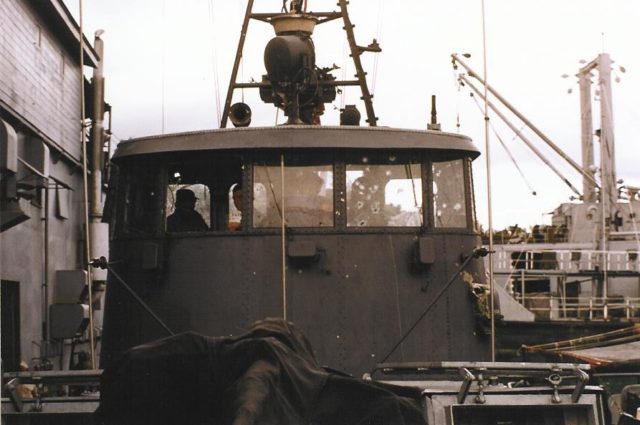
Photo – USCG.mil
Just as the fire on the fantail was put out, Chief Patterson started running up to the bridge. But when he reached the base of the ladder the ship shook, again throwing him back to the deck. This time, the planes had strafed the wheelhouse. The Chief picked himself up and ran up to the bridge. There he found the OOD on the deck, severely wounded. This second pass had also killed their captain, Lieutenant Junior Grade David C. Bostrom, as well as Engineman Second Class Jerry Phillips.
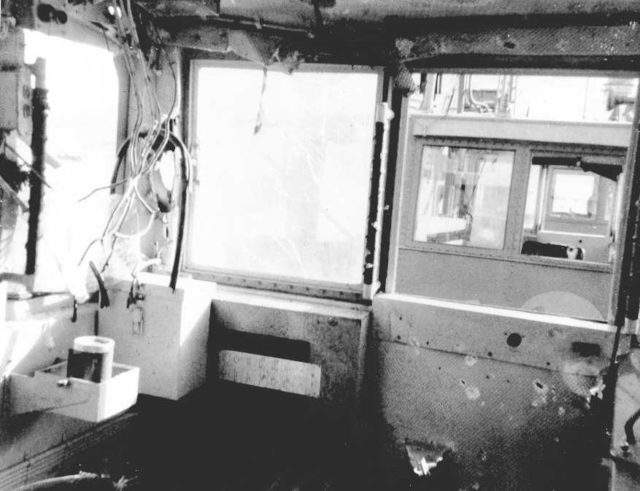
Quickly taking stock of the situation, Chief Patterson realized he was now in command, and immediately took charge. His first thought was to get out of there as soon as possible. He gunned the engines and began speeding south. The pilots likely took this to mean that their target was, in fact, a North Vietnamese smuggler running to the rivers to the south to avoid them. They picked up their attacks and commenced bombing runs as well as strafing. But this time, Chief Patterson knew they were coming, and was ready.
He listened for changes in the sound of the jets, and when it sounded like they were on approach, he would evade. First, he gunned the engines, so the plane undershot at the last minute, dropping its bombs behind the ship. The next run he threw the ship into reverse, causing the plane to overshoot. He then began making evasive turns; surprising considering that the ship’s helm and rudder controls were shot to pieces. Chief Patterson was operating the vessel solely through its two propellers. It went on like this for what must have felt like hours.
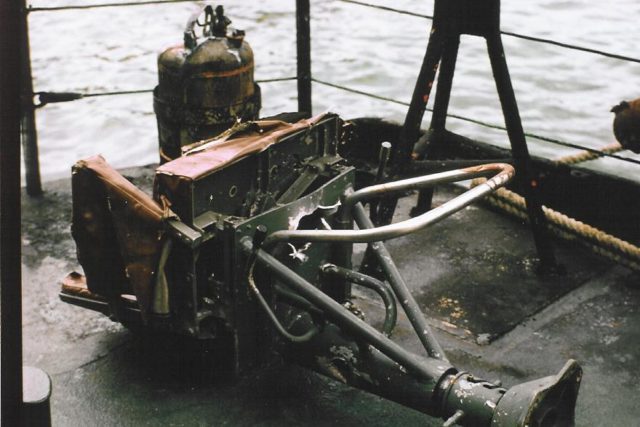
Photo – USCG.mil
While he was getting them out of harm’s way Chief Patterson instructed the able-bodied left in the crew to tend to the wounded. While he stayed on the bridge, the rest went down below, trusting in the thin protection afforded them by the deck and hull. Chief Engineman William Wolf, Patterson’s counterpart in the engine room, asked the BMC what he could do.
Chief Patterson told him to get on the only working radio (the two in the pilothouse had been knocked out) and get in contact with anyone. Luckily Chief Wolf was able to find a young Marine Captain, Richard P. Pierzchala. Wolf explained that if any US planes in the area were attacking ships under illumination it was an American ship.
Captain Pierzchala immediately recognized the direness of the situation and relayed the message to the Air Force.
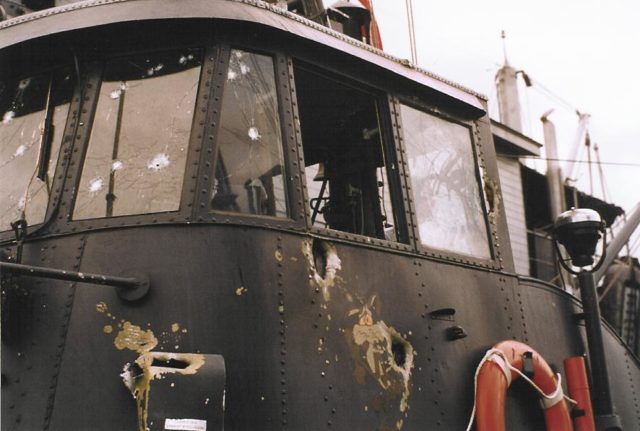
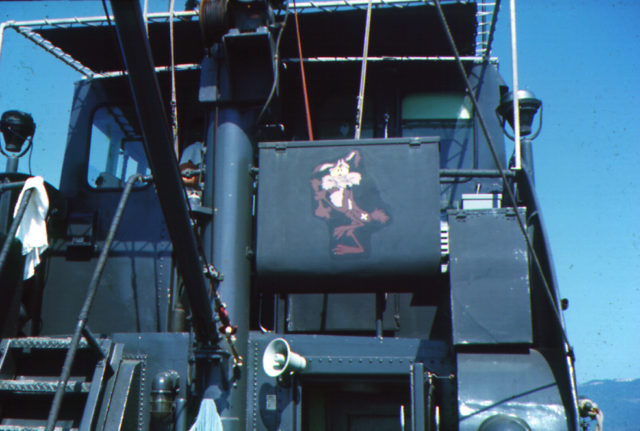
Photo – USCG.mil
The attacks now ceased, and Chief Patterson kept moving towards the shore. But despite his best efforts, he felt the ship begin to slow. His mind immediately jumped to the worst possible scenario: a bomb had blown a hole in their hull. Thinking they were taking on water, he immediately called for the men to abandon ship.
The crew split into two teams, one with Chief Wolf, the other with Chief Patterson. The more able men paired with severely wounded, and they set out. But while paddling to shore in rubber life rafts they came under fire again, this time from the shore.
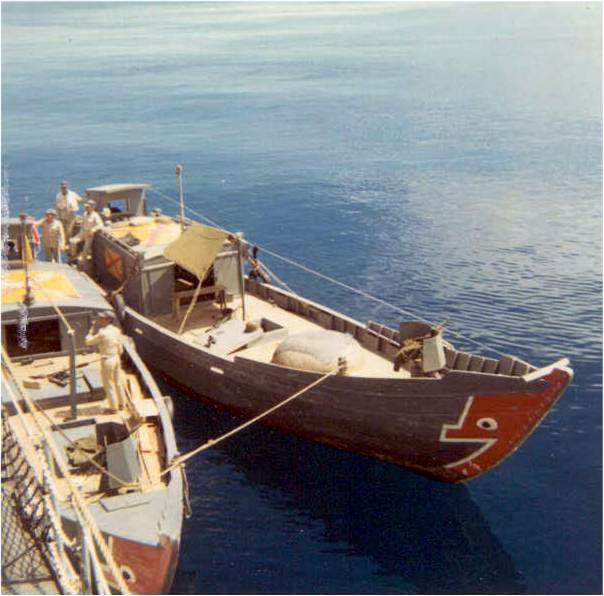
Photo – Wikipedia
As the Coasties approached the beach, and safety, machine gun fire erupted both from the north and the south. A South Vietnamese Junk Force (small coastal boats) station likely mistook them for a North Vietnamese smuggling crew. And Viet Cong guerillas to their south correctly identified them as Americans. Caught in the crossfire from both allies and enemies the crew paddled back to their ship, and relative safety.
But luckily, it was around this time that the Point Caution, which had been steaming towards them since 0350, arrived. The time was now 0455, and the Point Welcome crew had just undergone over an hour of hell. They were finally rescued by the Point Caution and the Vietnamese Junk Force crew who had just shot at them. Later that same day Chief Patterson returned to the Point Welcome to inspect the damage.
Finding it serviceable he and four other crew members sailed her back to their home base at Da-Nang. Not long after that, she was back on operational duty hunting smugglers and infiltrators.
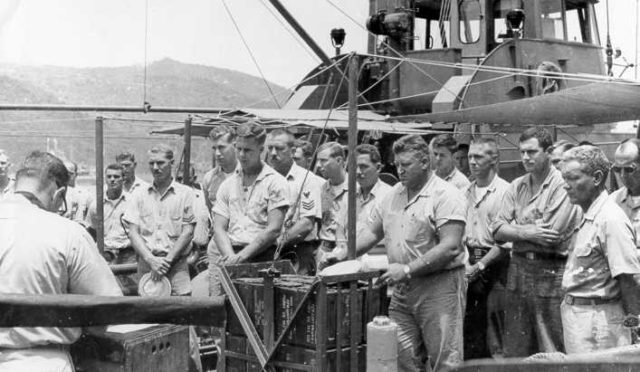
Photo from USCG.mil
For his action on August 11th, 1966 Chief Boatswain’s Mate Richard Patterson was awarded the Bronze Star with Combat V. His calmness under pressure, skill at the helm, and improvisational ability likely saved the remaining eight men on board the Point Welcome.
This tragic story did lead to positive change, though. New policies were instituted to identify targets, and keep clear communication between different branches of the service.
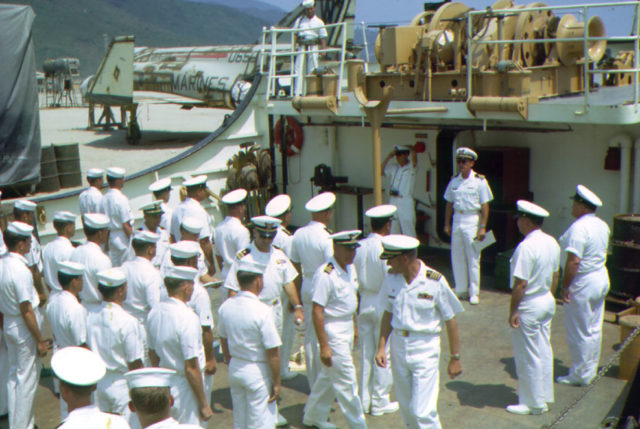
Photo – USCG.mil
